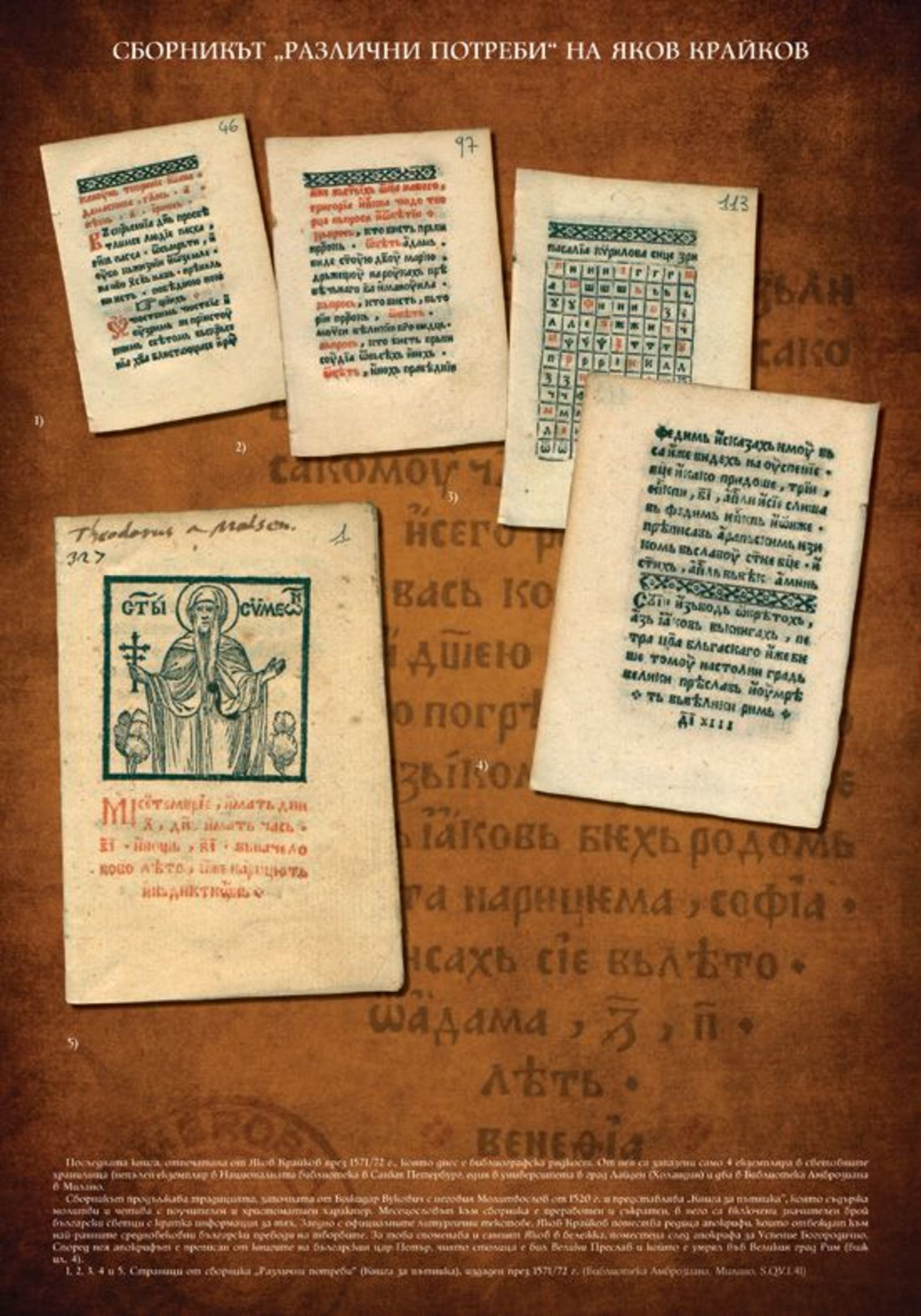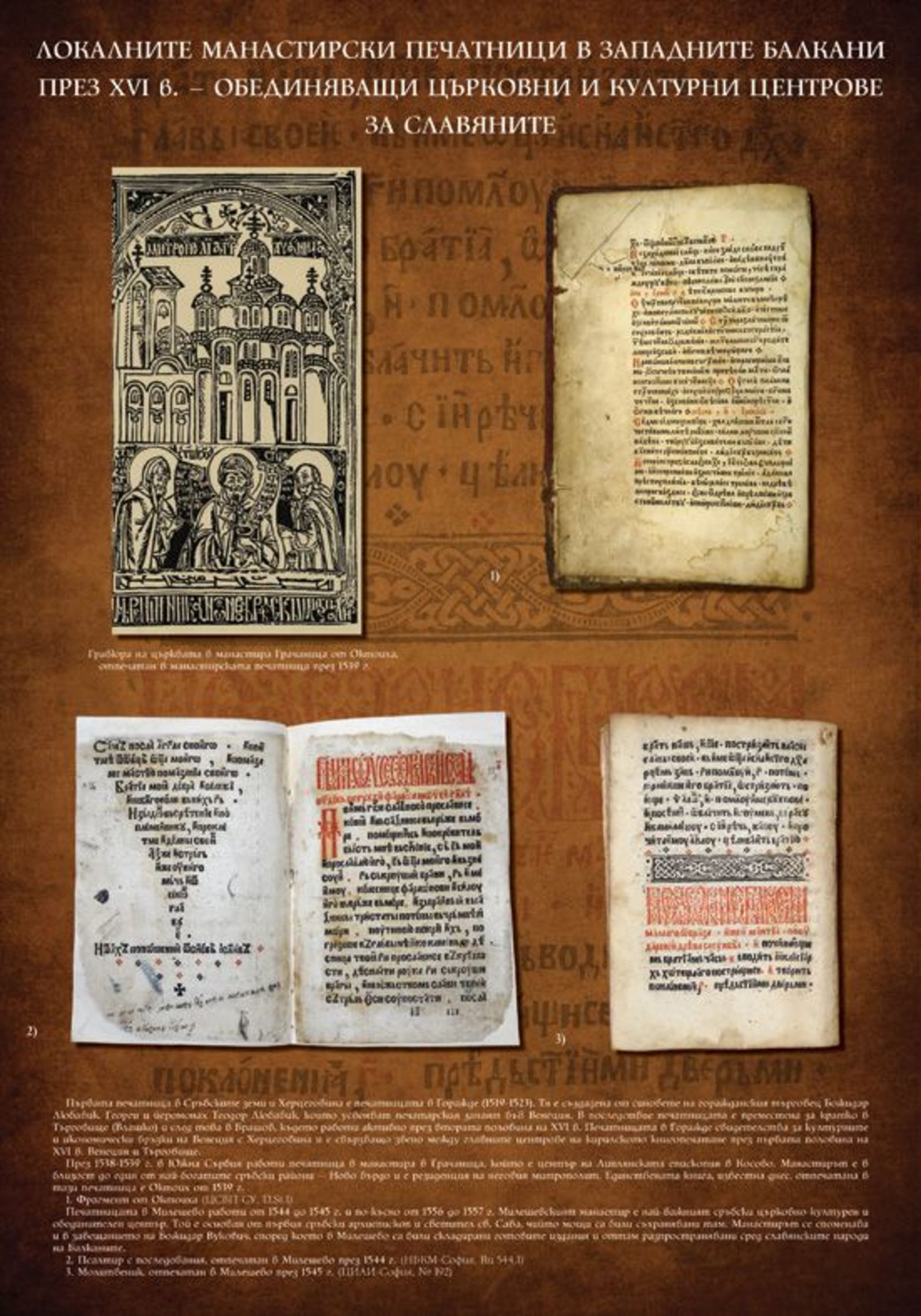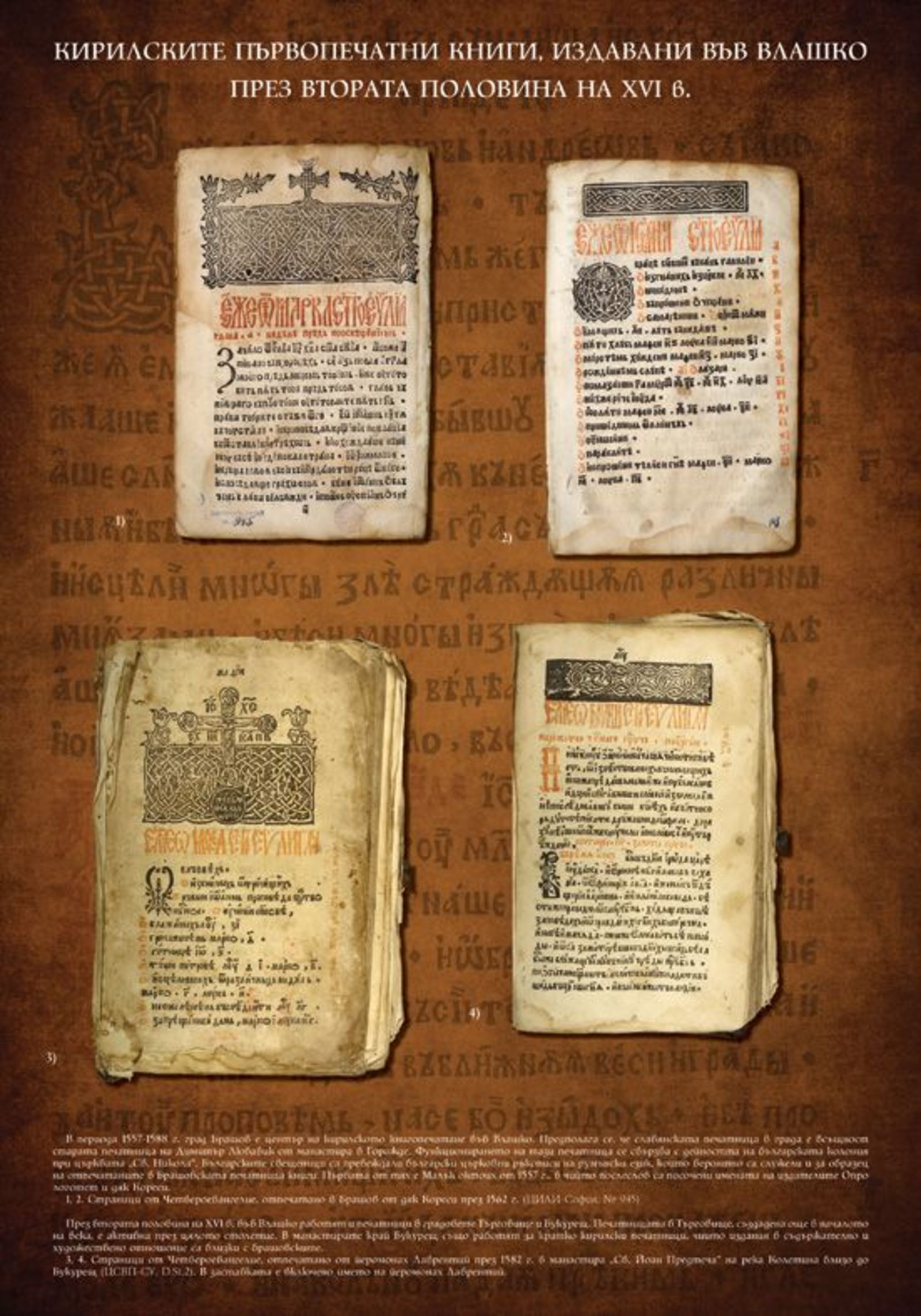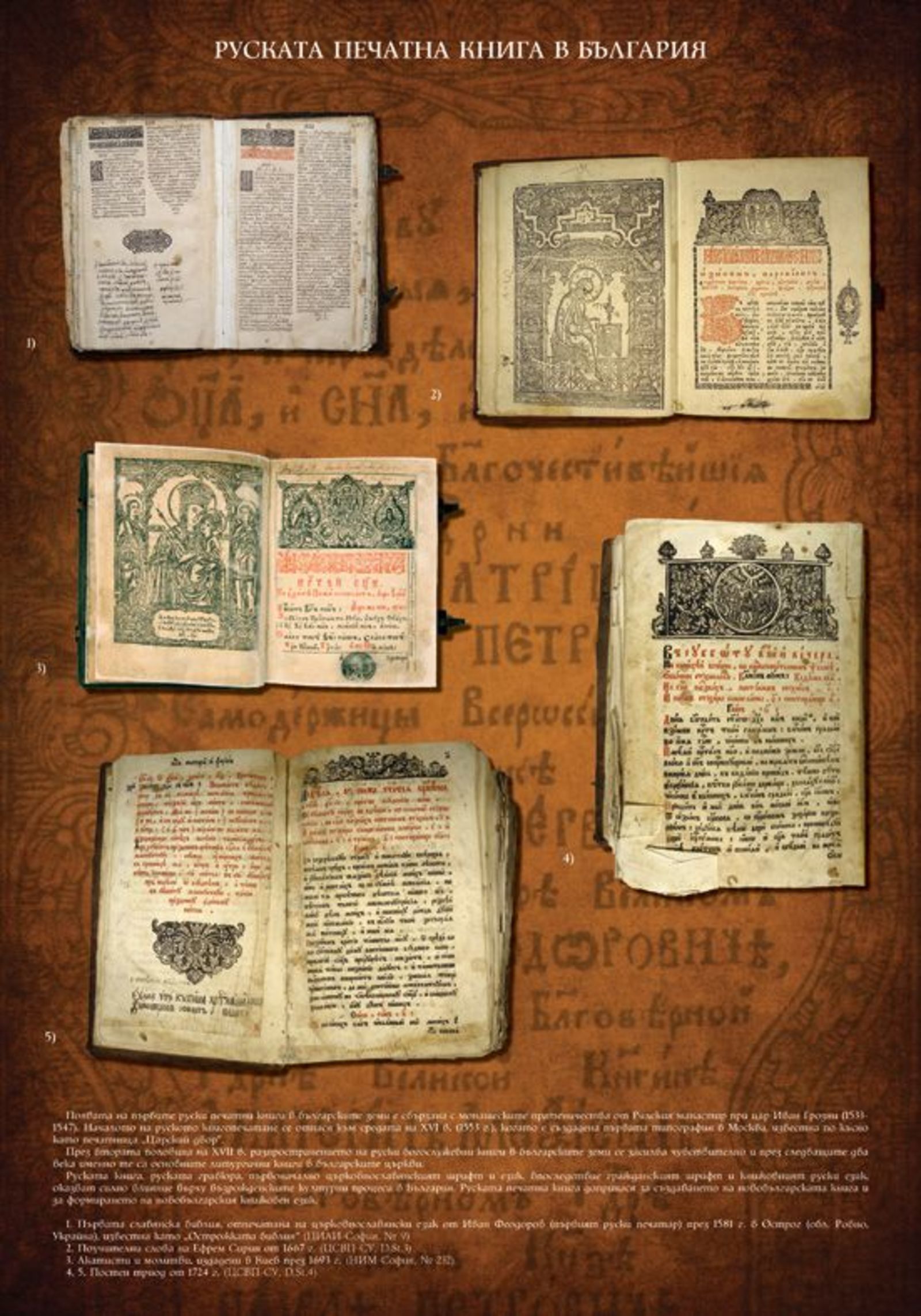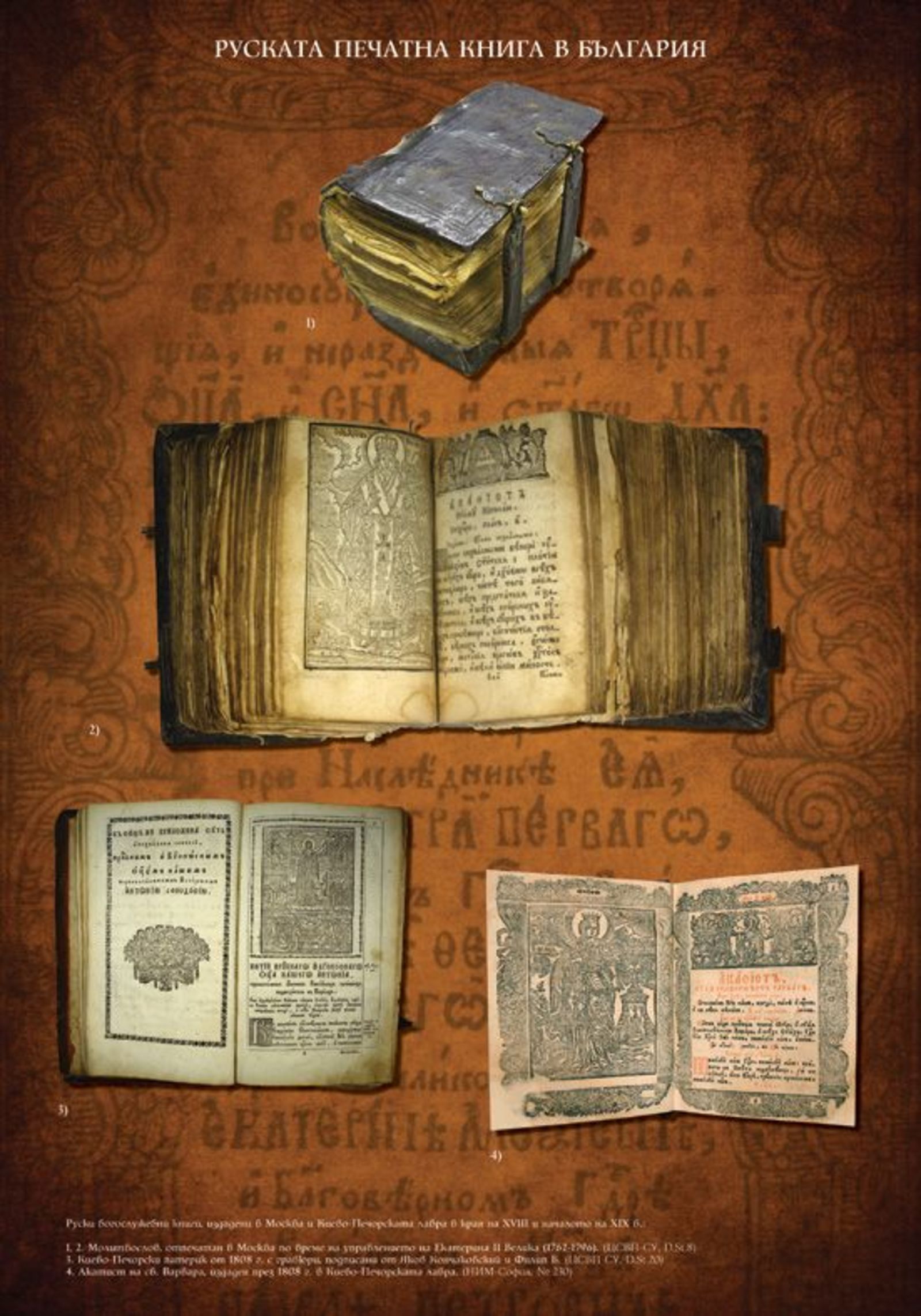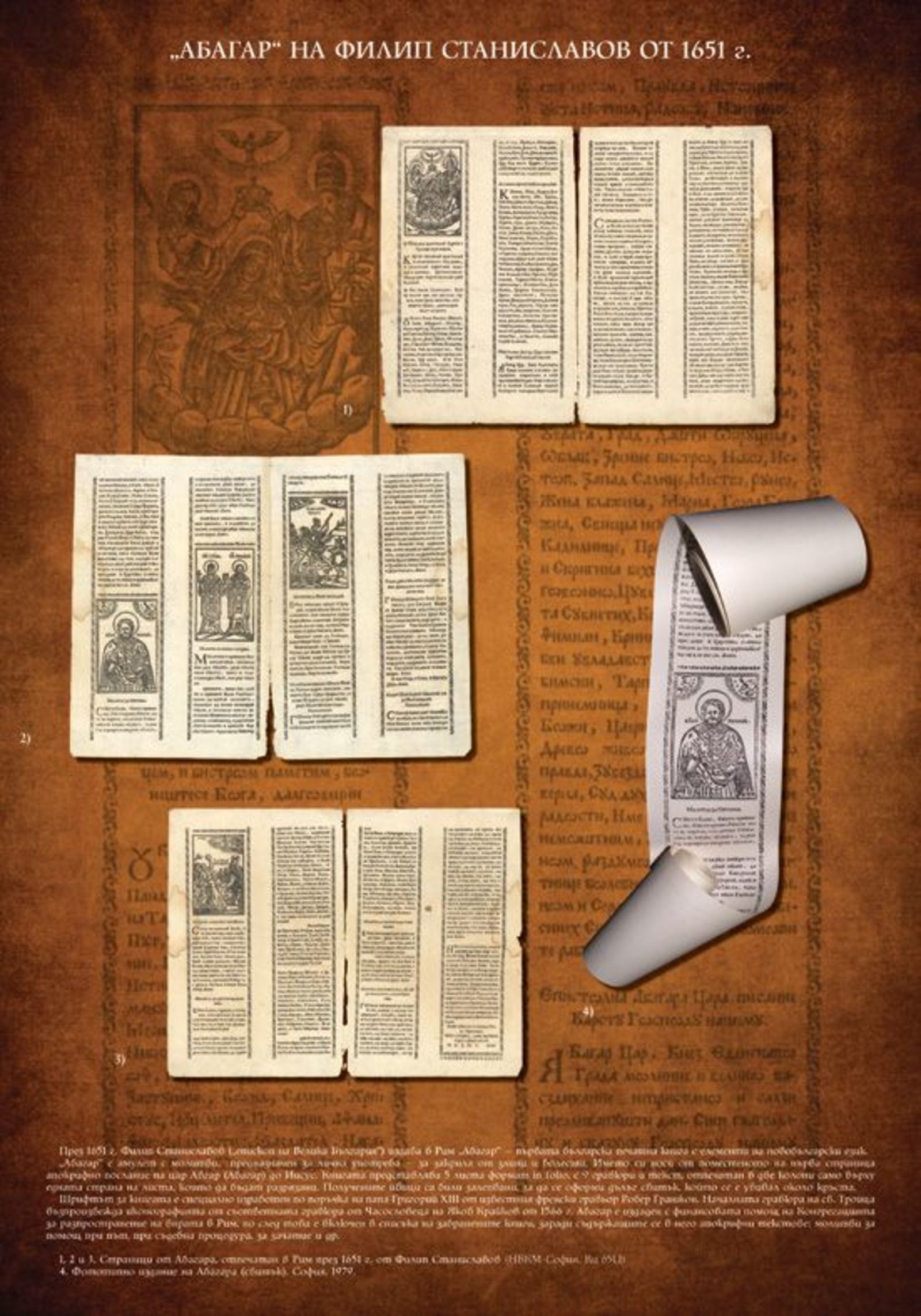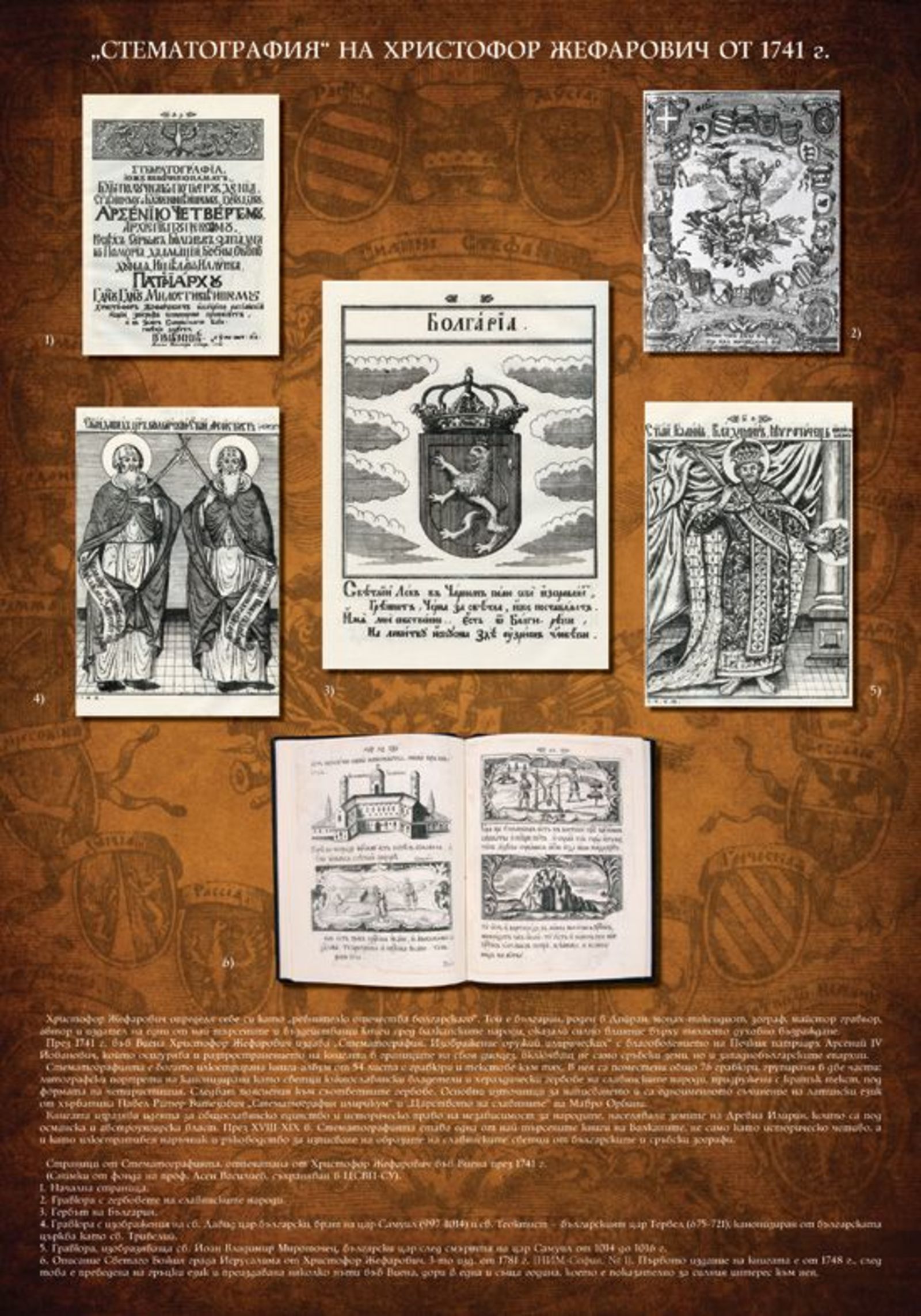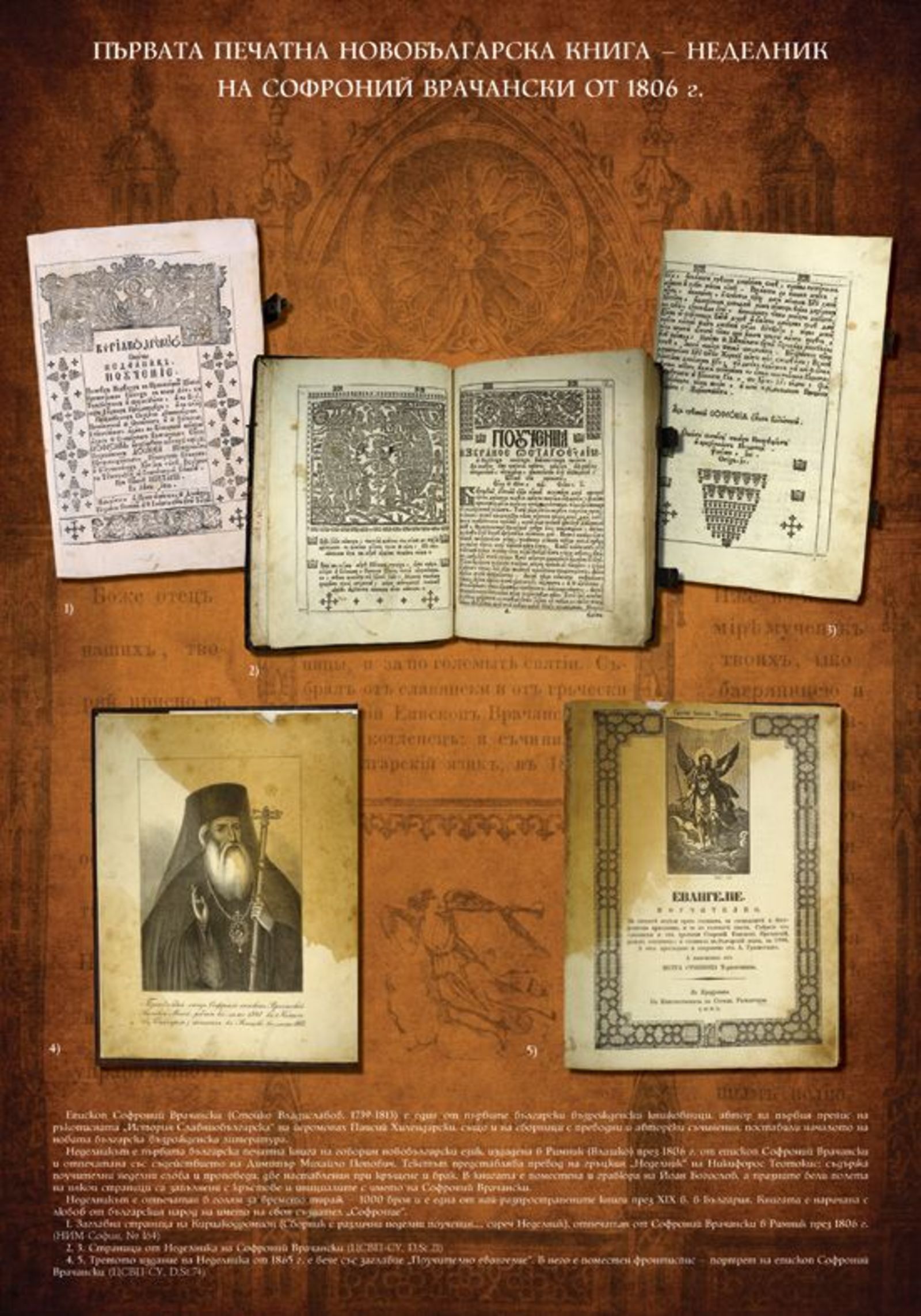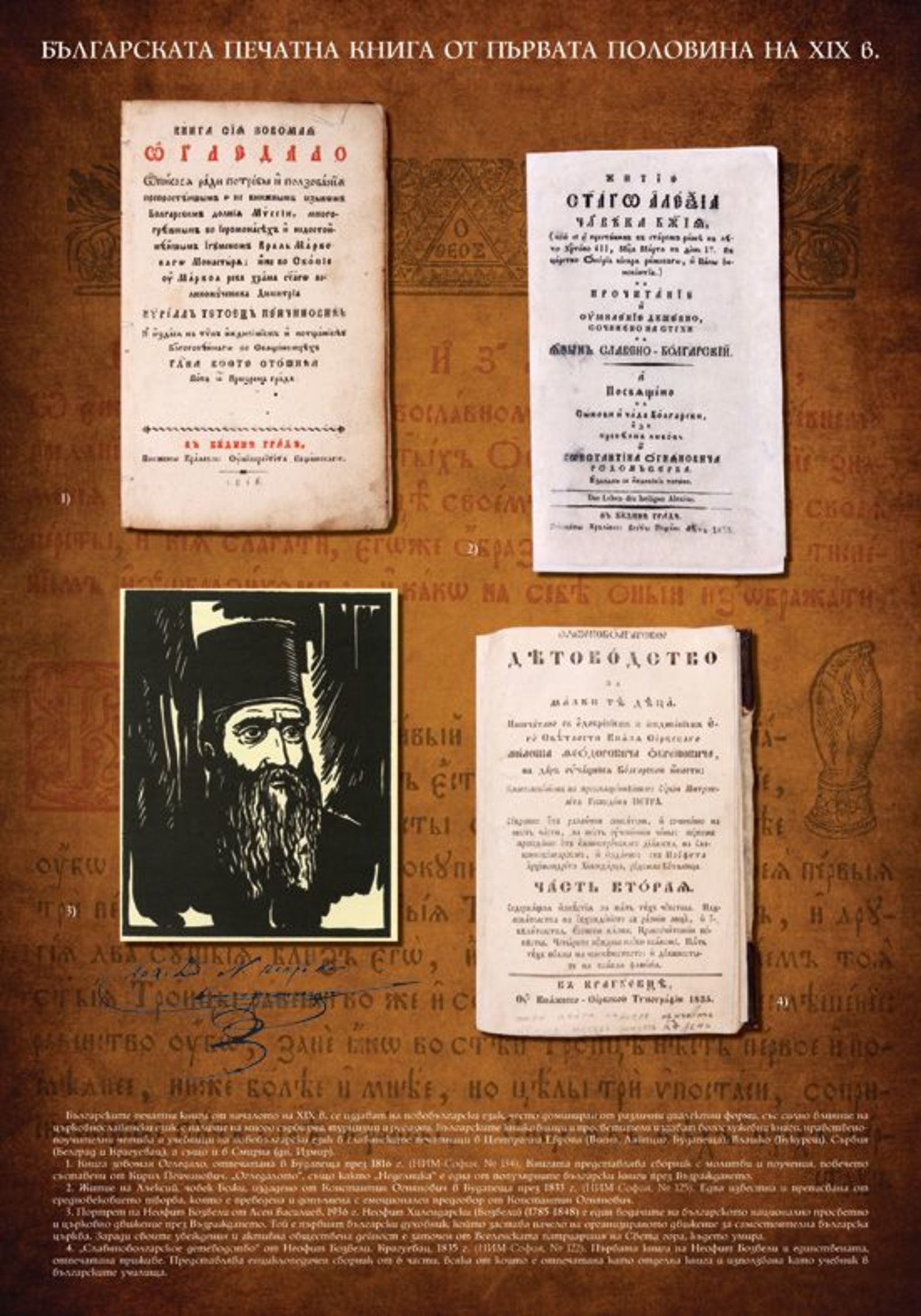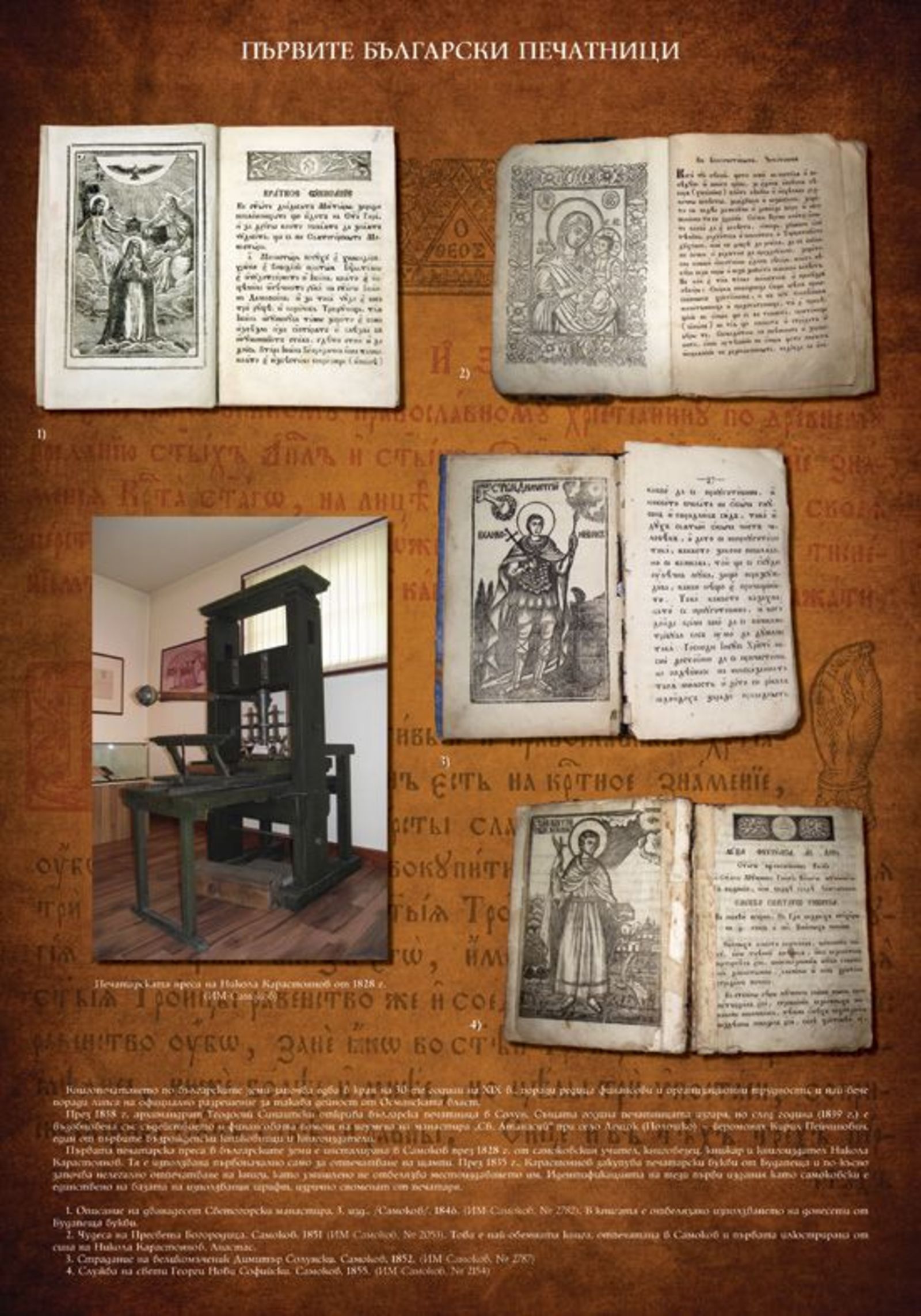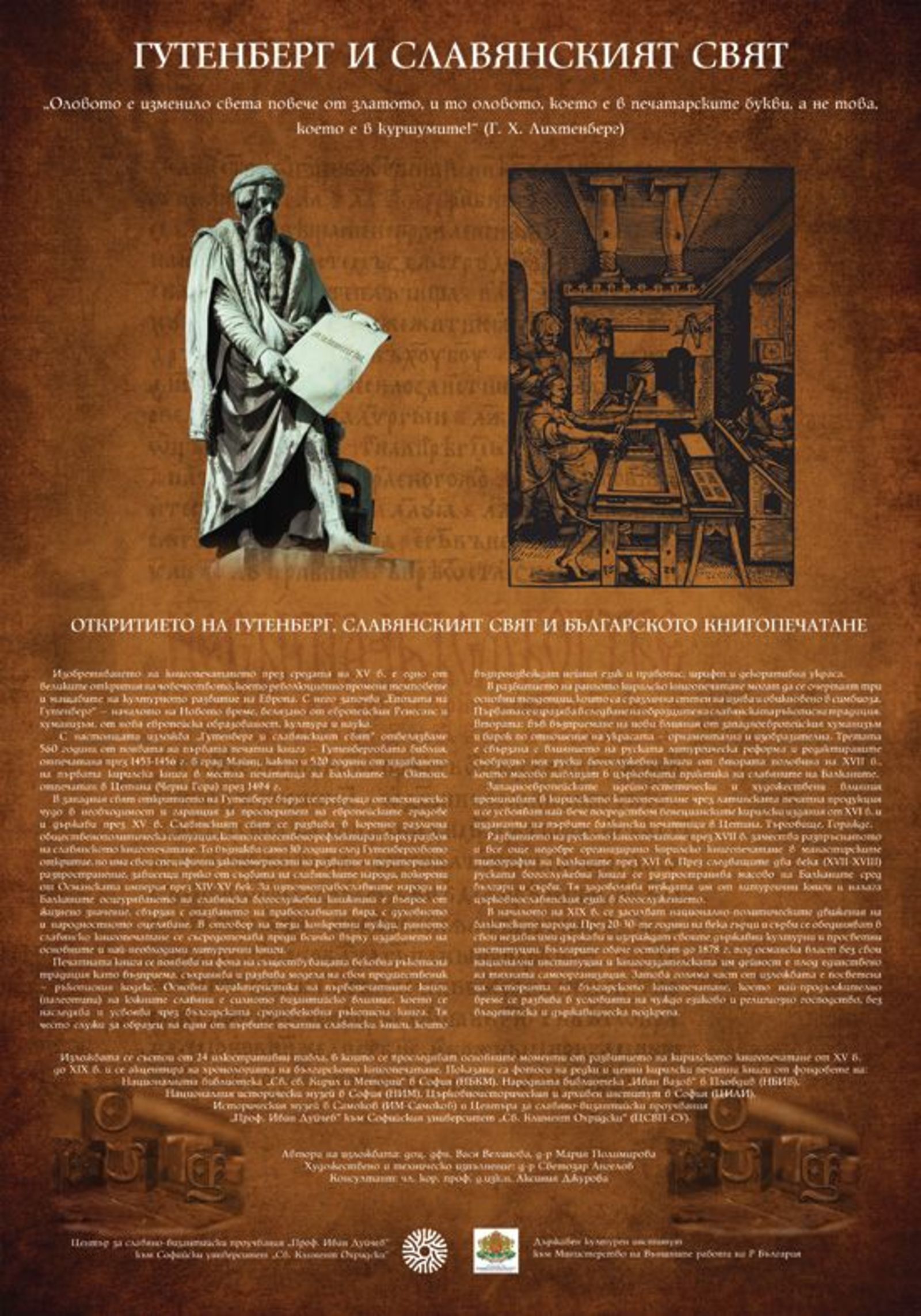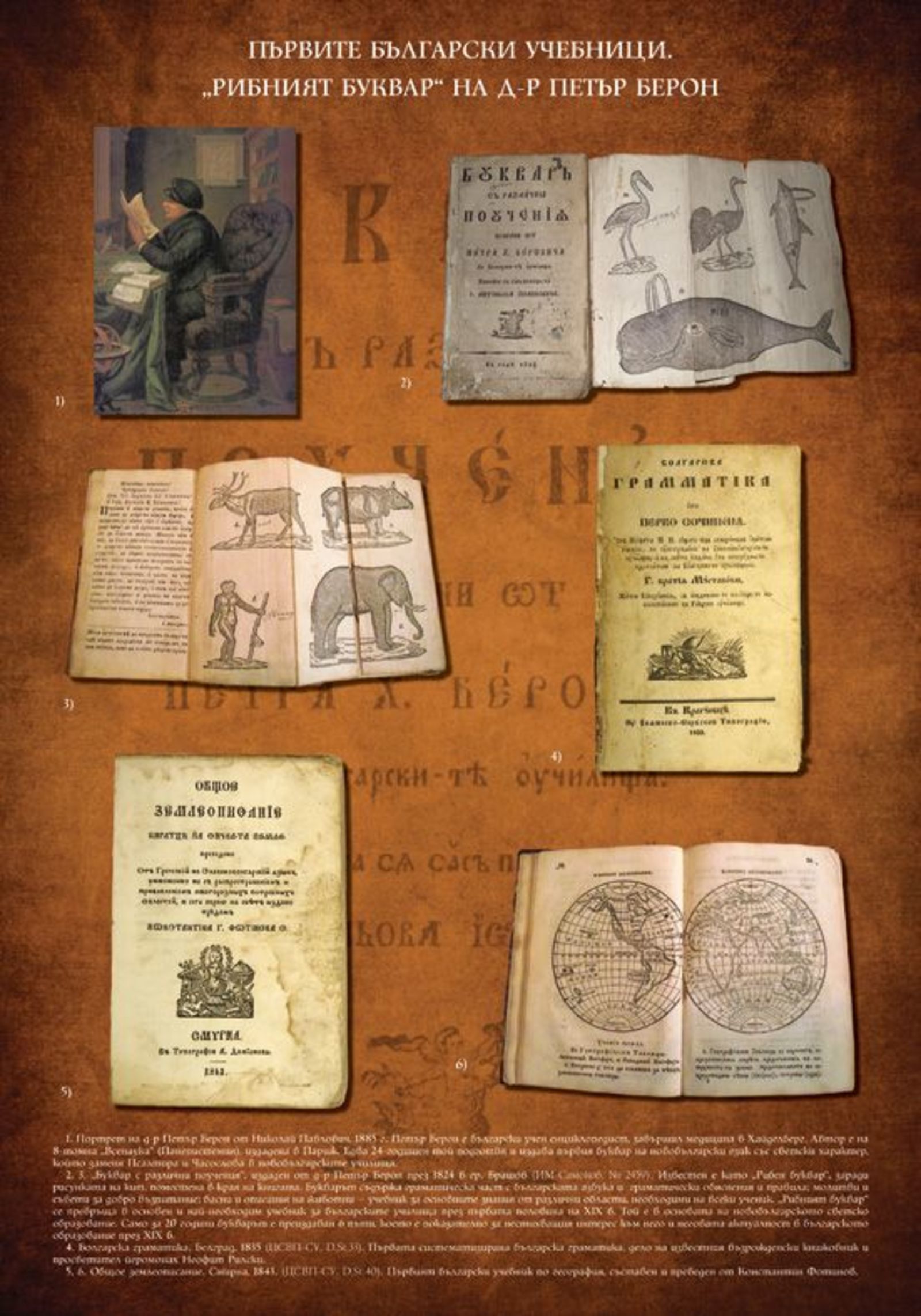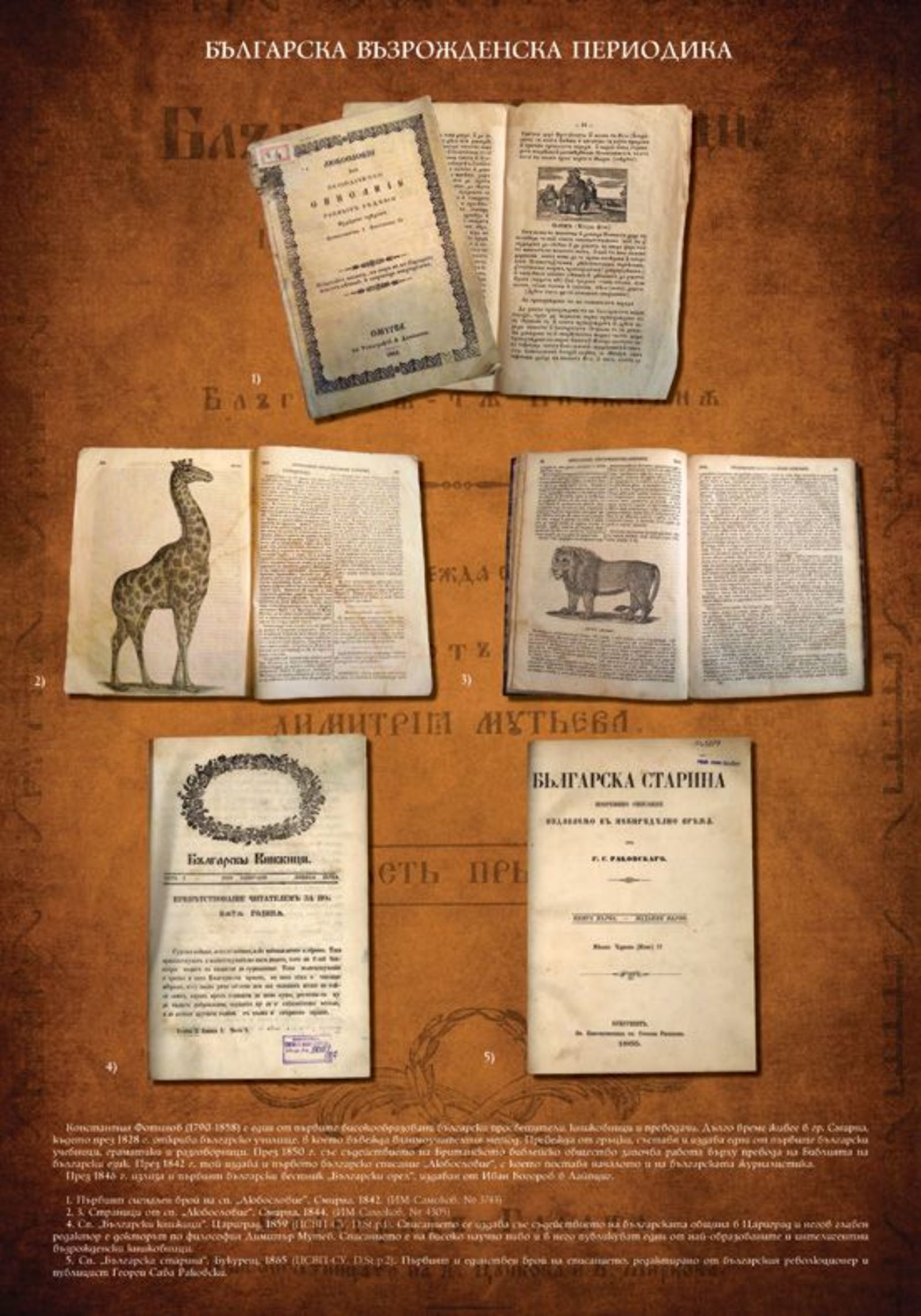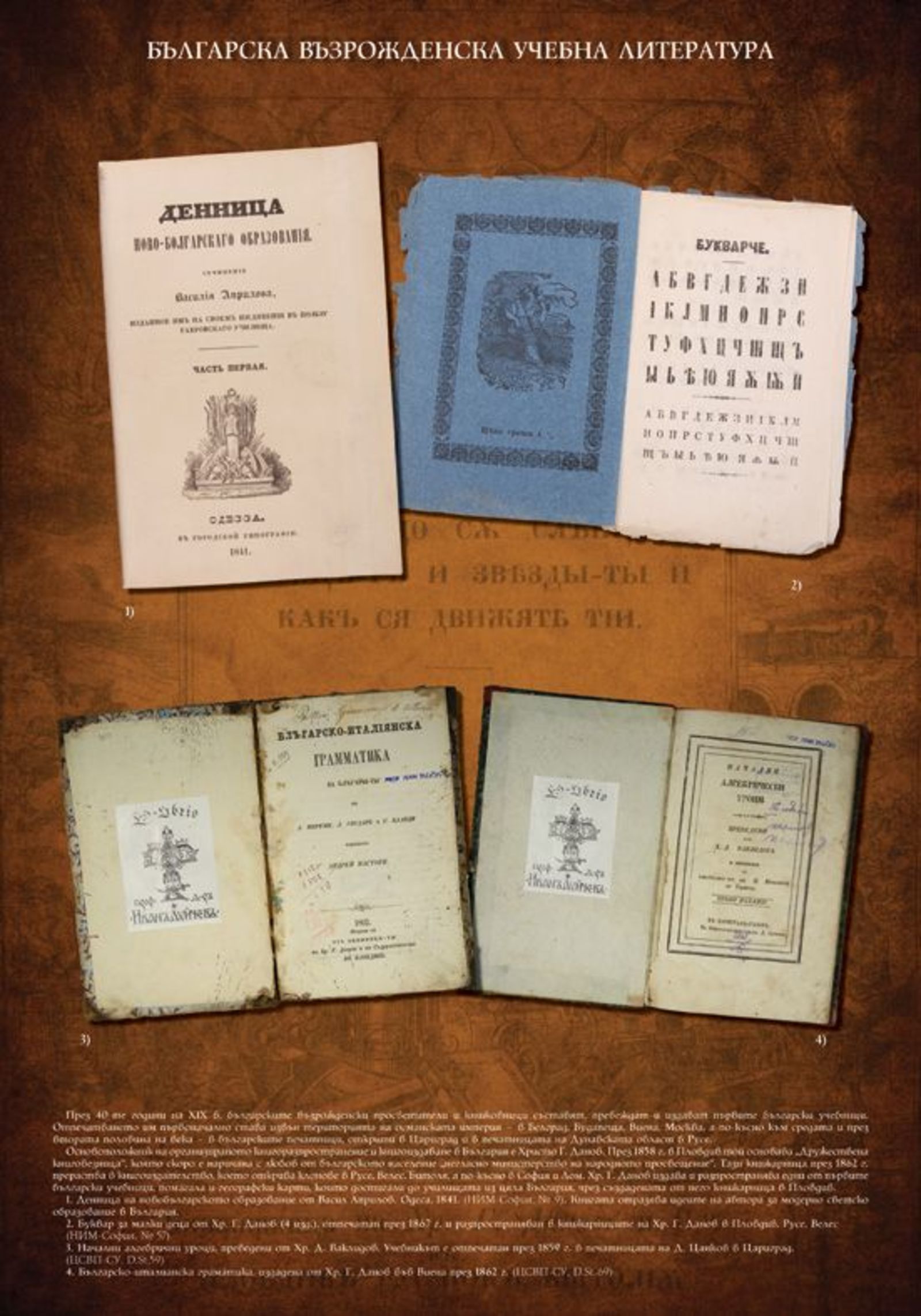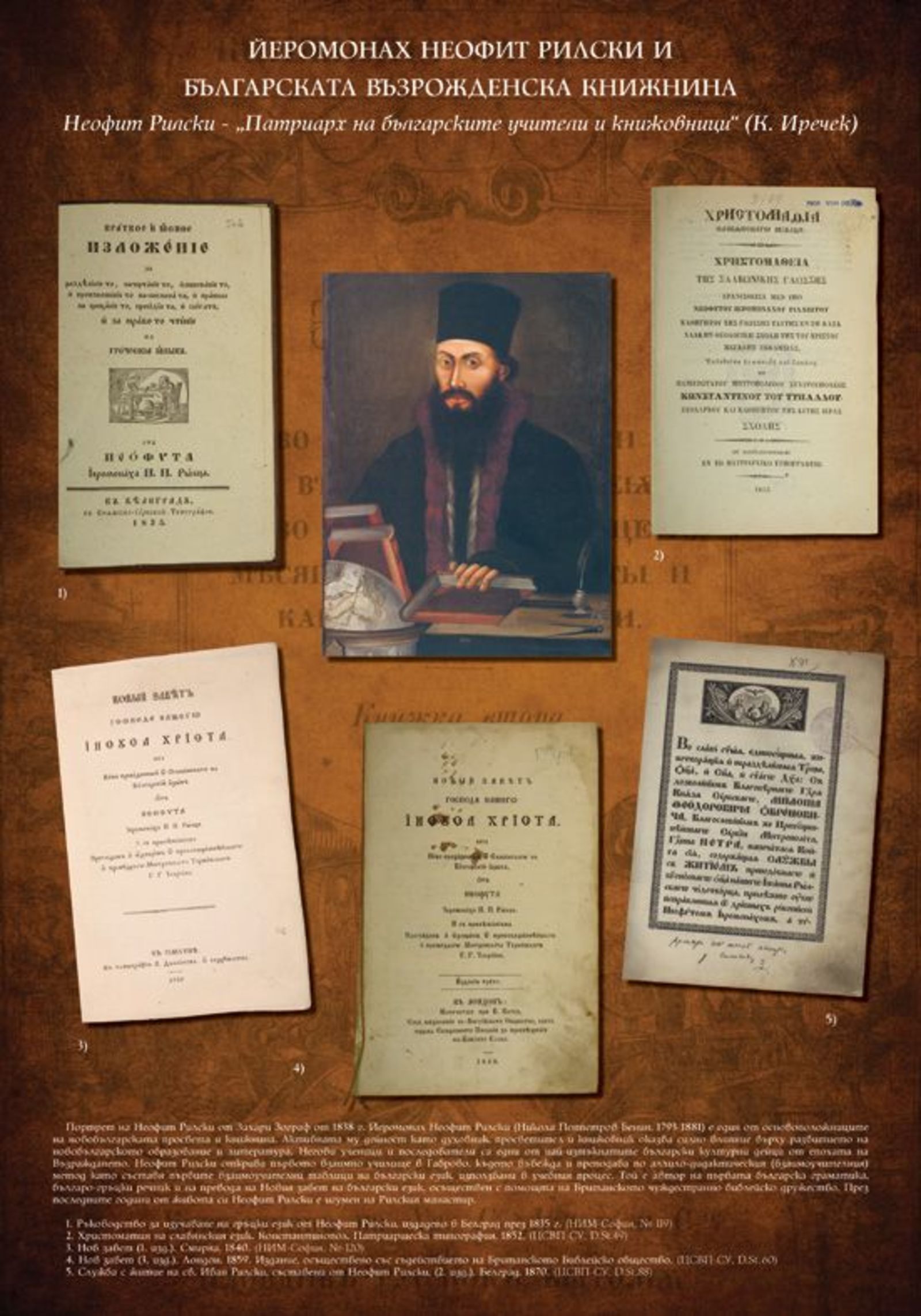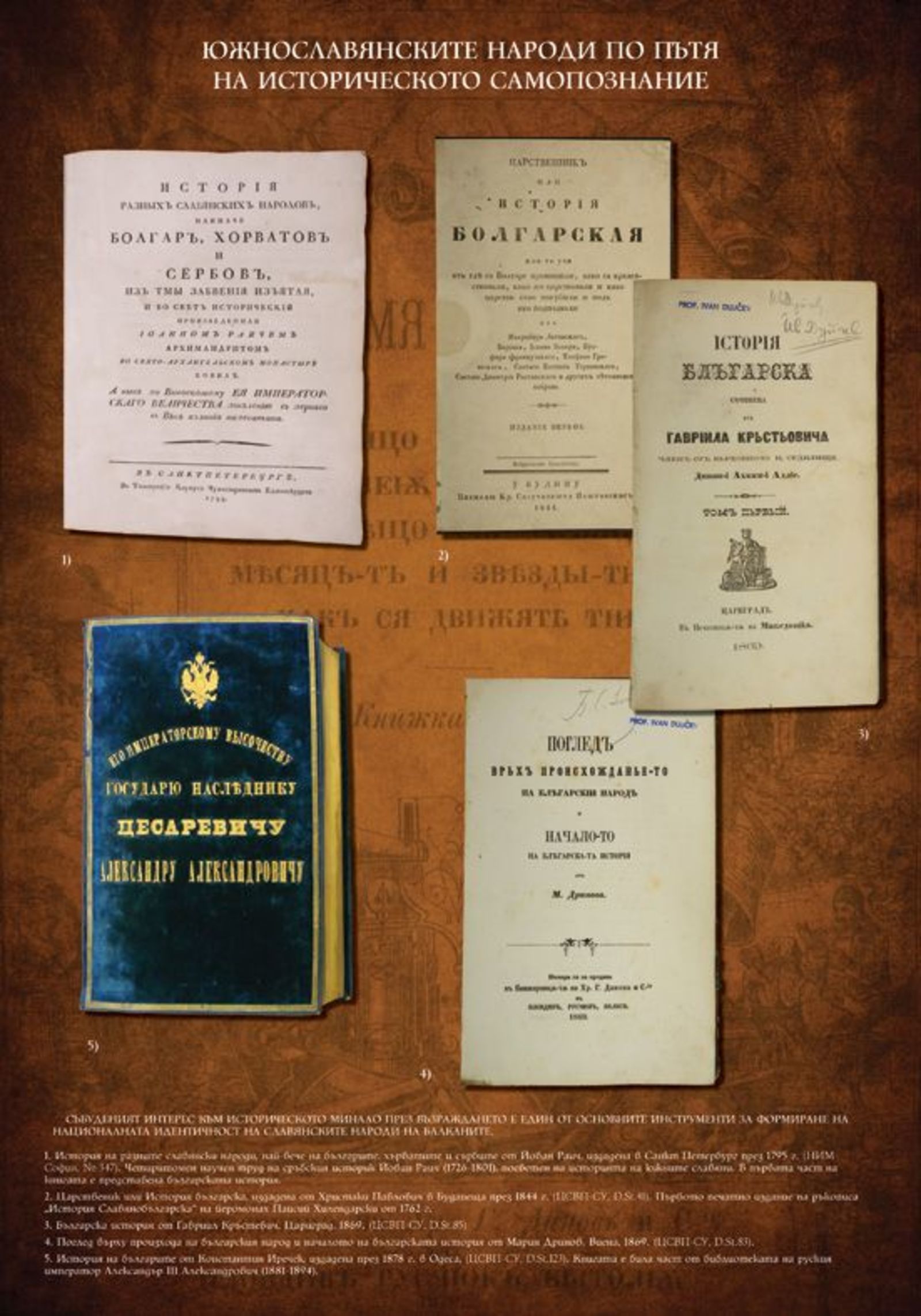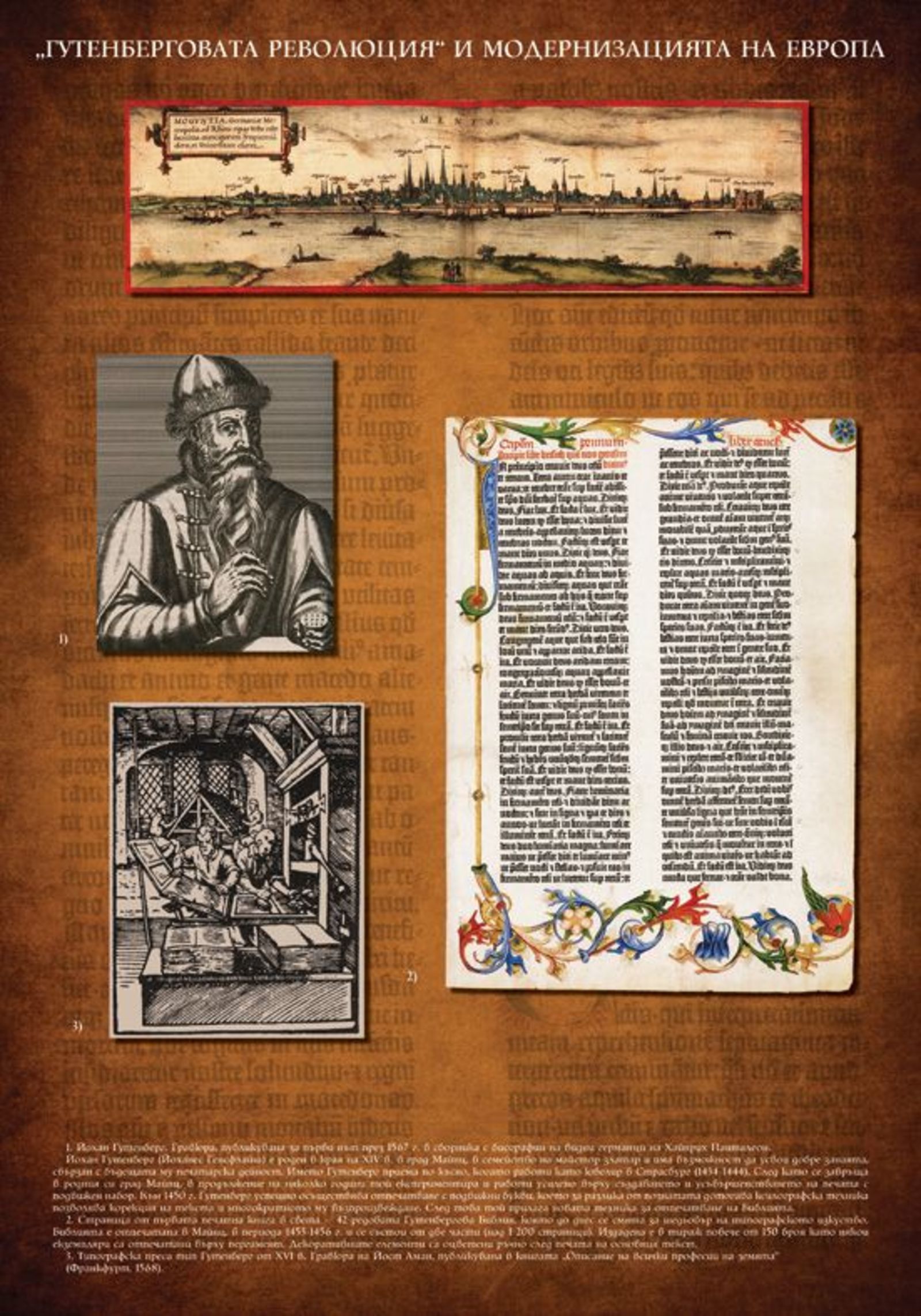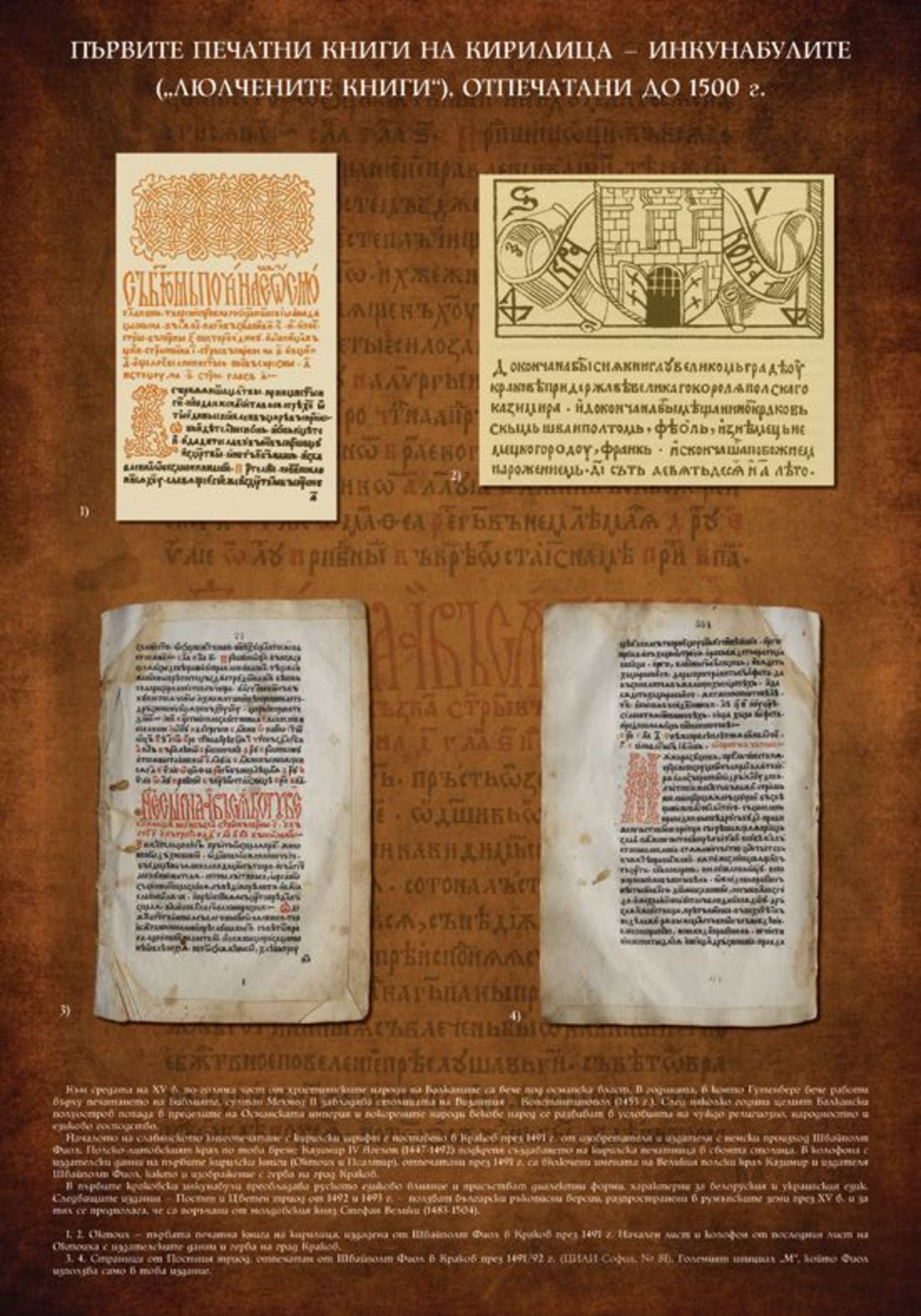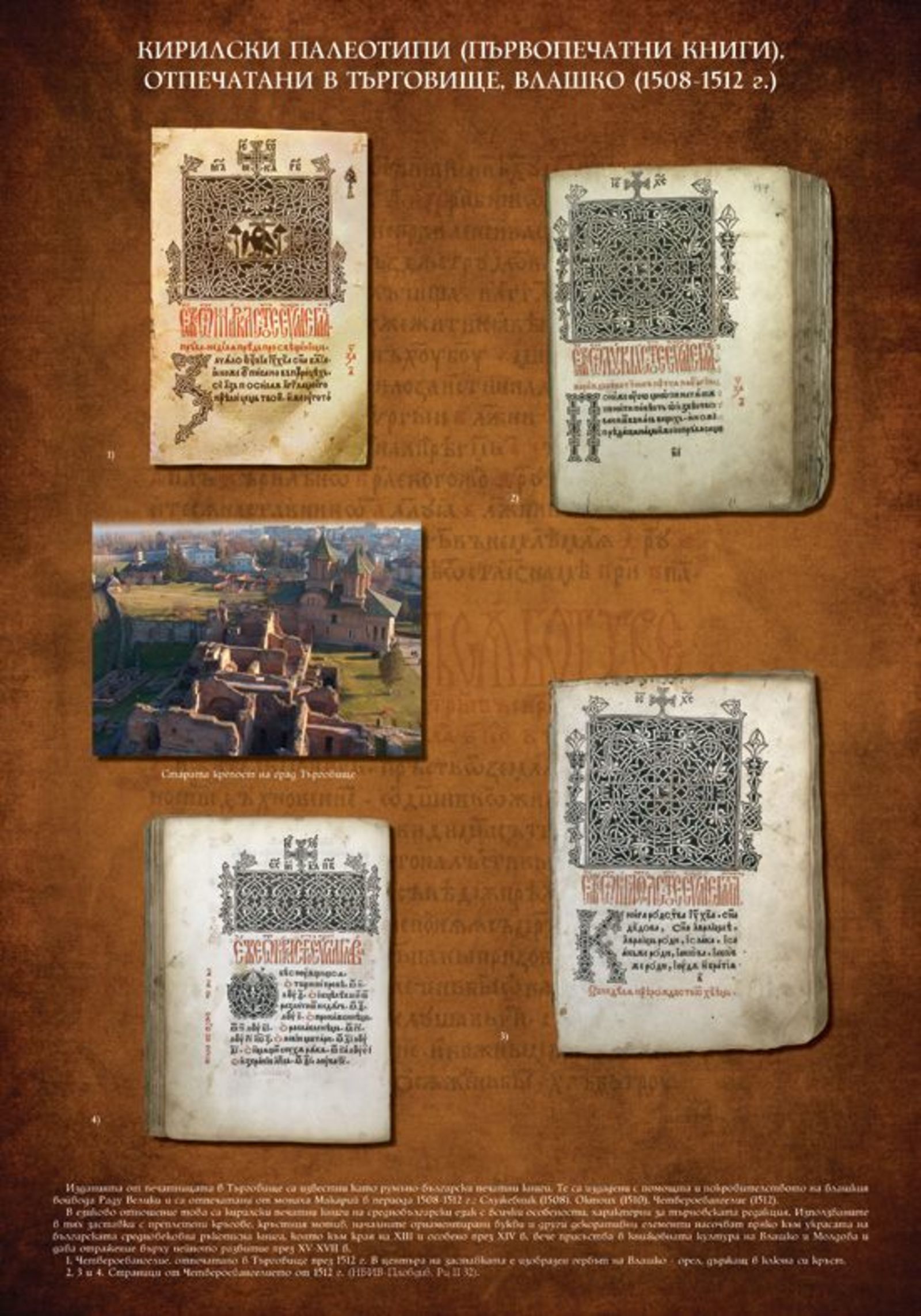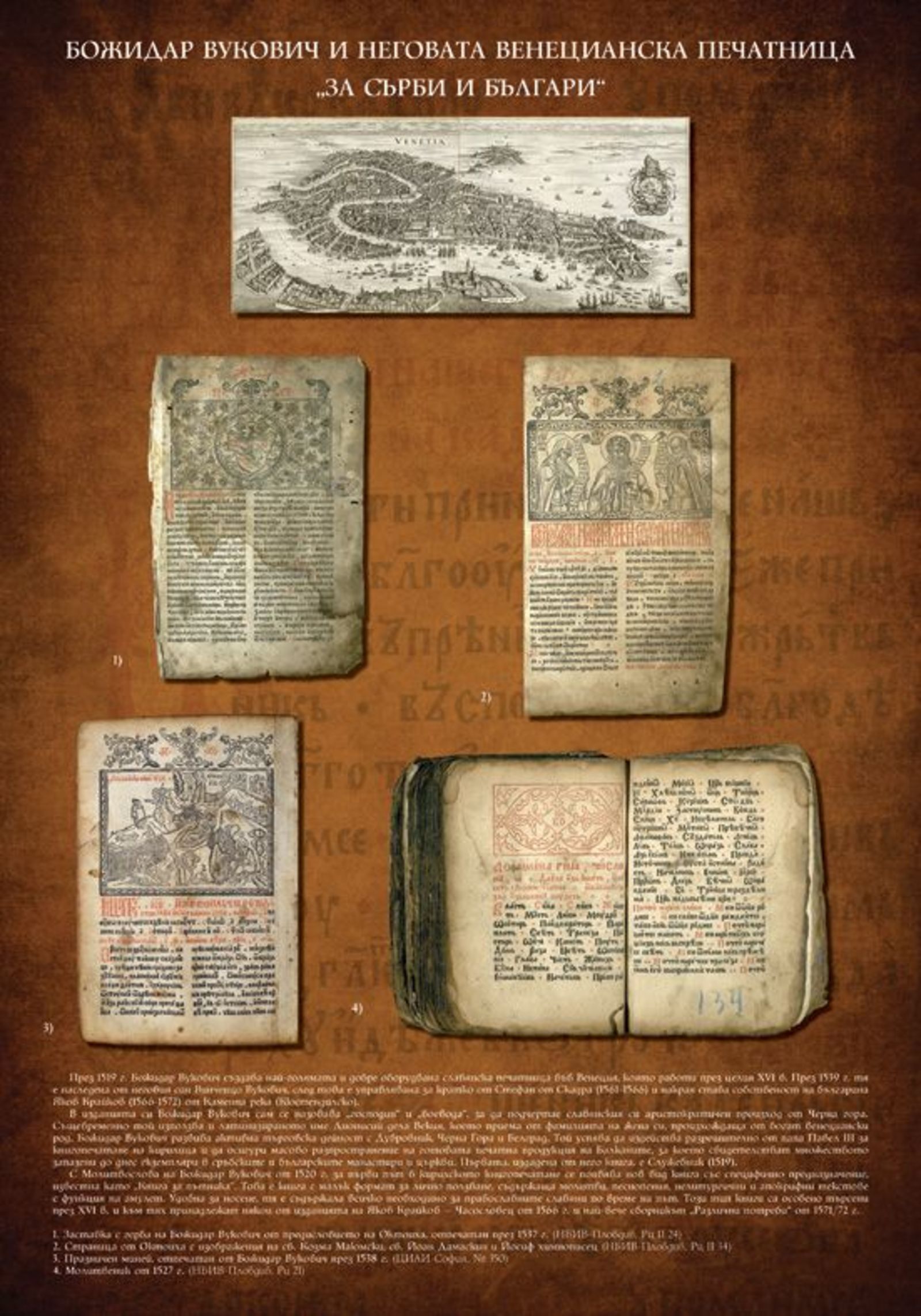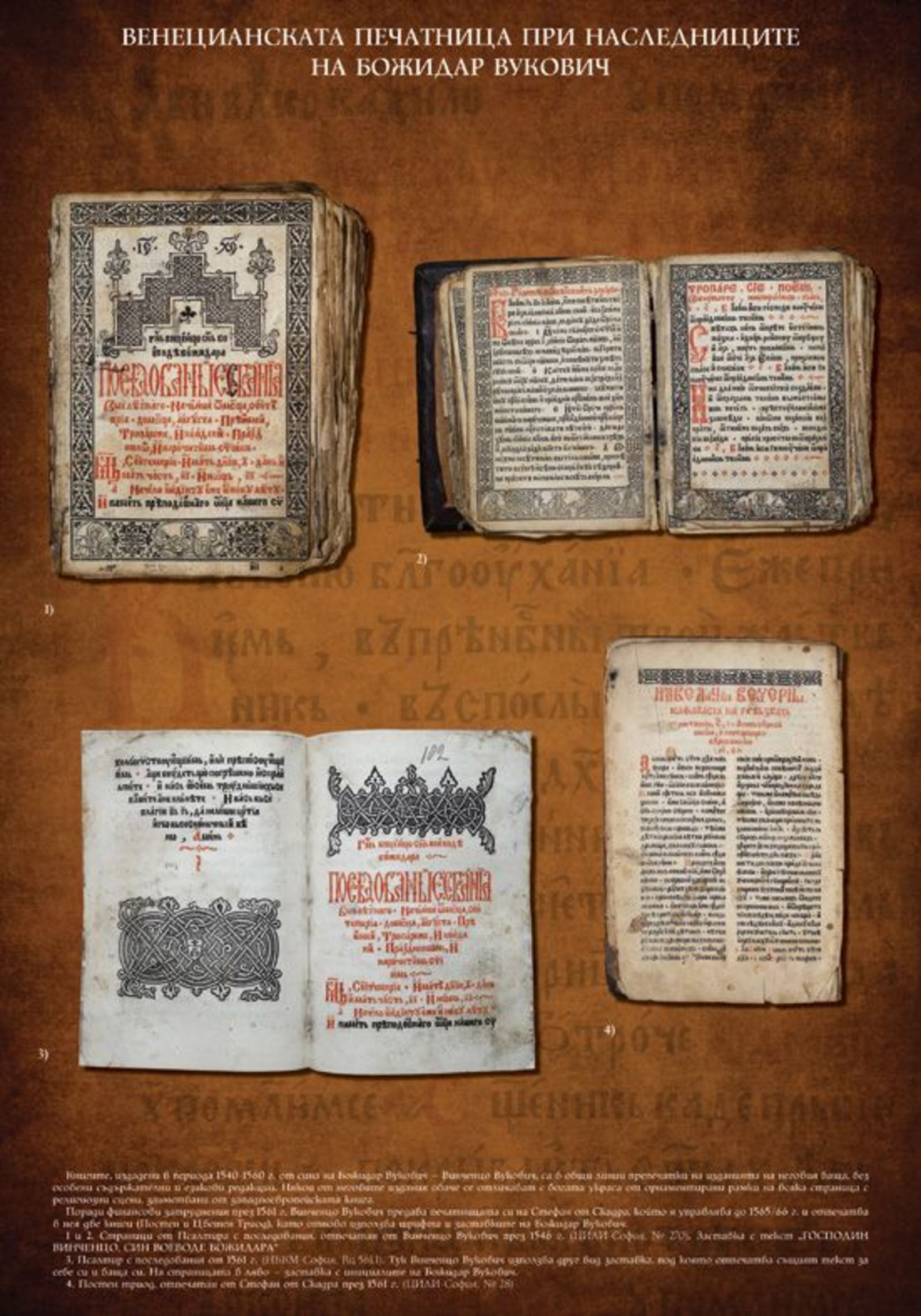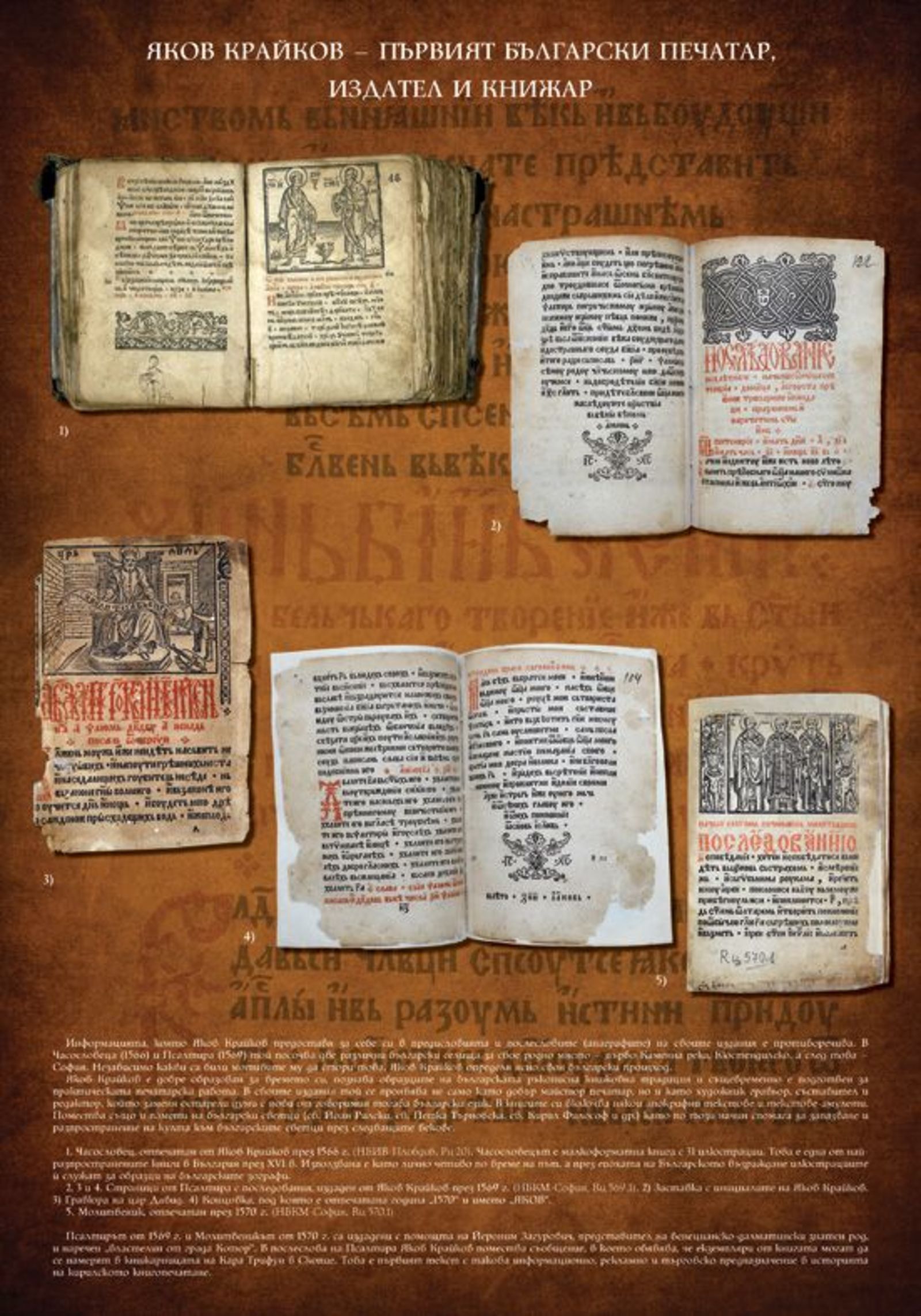Gutenberg and the Slavic World
With the present exposition “Gutenberg and the Slavic World” we mark the 560th anniversary since the printing of the first book – the Gutenberg Bible in 1453-56 in the city of Mainz as well as the 520th anniversary since the publication of the first Cyrillic book in a local printing house on the Balkans – Octoechos (The liturgical book, containing the eight Church sound-modes), printed in Cetinje (Montenegro) in 1494.
In the Western world Gutenberg’s discovery quickly changes from a technological miracle to a necessity and a guarantee of prosperity for the European towns and states in the 15th century. The Slavic world develops in completely different social and political circumstances which of course reflect on the development of the Slavic book printing. The printing itself starts a mere 30 years after Gutenberg’s discovery; it has its own specific patterns of development and distribution, depending directly on the fate of the Slavic nations, subjugated by the Ottoman Empire in the 14th and 15th century. For the orthodox Christians on the Balkans having a Slavic liturgical literature is a matter of up most importance; this matter relates to the preservation of the orthodox faith and with the spiritual survival of the nations. In response to such needs the early Slavic book printing concentrates primarily on the most necessary liturgical books.
In times of social media and digital diplomacy the exhibition “Gutenberg and the Slavic World” expands our knowledge of the cultural heritage of the European continent and in particular the Slavic nations. The printing machine is a kind of a prototype of the modern communication technologies for its time and it radically transformed the European society.
The exhibition “Gutenberg and the Slavic World” consists of 24 illustrative panels that track key moments in the development of Cyrillic typography from the 15th until 19th century and focuses on the history of the Bulgarian typography. It includes photos of rare and valuable Cyrillic printed books from the collections of: the National library “Saints Cyril and Methodius” – Sofia, the National library “Ivan Vazov” – Plovdiv, the National History Museum in Sofia, the Church-Historical and Archive Institute in Sofia, the Museum of History – Samokov, and the Centre for Slavic and Byzantine Studies “Professor Ivan Dujčev” with the Sofia University “St. Clement of Ohrid”.
The project was made by the Centre for Slavic and Byzantine Studies “Professor Ivan Dujčev”.
The exhibition is part of the “Travelling Exhibitions” of the State Institute for Culture and is included in the cultural calendars of Bulgarian diplomatic missions abroad.
